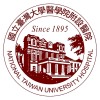
Stroke: Reduction of Physical Performance Post Stroke. Inactivity or Secondary Complications?
Cerebral StrokeThe purpose of this project is to follow first-ever- acute stroke patients from onset, one, two and four years post stroke and study the effect of two different approaches of exercises implemented the first year post-stroke.

Does Splinting Prevent Contractures Following Stroke?
Cerebrovascular AccidentAfter a stroke, many people develop contracture of the muscles in their affected wrist and hand which leads to a permanently clenched, painful hand. A contracture is often treated by therapists who use hand splinting to prevent it occurring or slow down its progression. Despite their wide use, there has not been research completed to investigate whether or not splinting prevents contracture in people following stroke. In fact, this project will be the first of its kind in the world and is therefore vital to stroke rehabilitation. The study is a multi-centre, randomised controlled trial that will measure the effect of hand-splinting in two positions on the prevention of contracture, functional use of the hand, and quality of life.

Influence of Assistive Device Use While Performing Dual Task in Patients With Stroke
StrokeThe primary purposes of the this three-year research proposal are to investigate the influence of assistive device use on dynamic balance and the associated attentional demands during standing and walking in patients with stroke

Remote Ischemic Conditioning for Motor Recovery After Acute Ischemic Stroke
Ischemic StrokeThe most recent treatment for stroke rehabilitation is to combine physical training with other therapies to enhance or accelerate recovery.The hypothesis of this study is that remote ischemic conditioning (RIC) might have a beneficial effect on motor recovery of AIS

Effects of Mental Practice for Mobility in Post-stroke Hemiparesis
StrokeHemiparesisStroke is a neurovascular event characterized by impaired blood supply to the brain due to rupture or obstruction of certain cerebral arteries, which often results in hemiparesis and can affect individuals of any age and sex, being prevalent in the elderly population. Among the main treatments available for stroke rehabilitation, most of them demands an appropriate structure and high-qualified personnel. Searching for more affordable treatment options, several studies suggest the use of mental practice with motor imagery as a potential therapeutic tool, since it can be performed at any place or any time the patient wishes, including their own homes. Motor imagery can be defined as the covert cognitive process of imagining a movement of your own body(-part) without actually moving that body(-part). Within this context, the objective of this study is to investigate the effects of mental practice for mobility, gait function and speed and muscle strength of the lower limb in subacute post-stroke hemiparesis.

Backward Treadmill Training in Patients With Chronic Stroke
StrokeGait impairment is a common cause of disability in patients who have experienced a stroke and recovery of walking is a priority goal. Gait outcome is a significant factor that influences a patient's chance of returning to the social life activity and rehabilitation is an effective treatment for restoring gait in these patients. Learning to walk backwards correctly has been recommended to improve the movement components required for walking forwards. Several studies demonstrated that during backward walking the muscle activity is higher, more oxygen consumption, metabolic and cardiorespiratory activity are required and the same motor program is used comparing to during the forward walking. It has been suggested that backward walking therapy may be promoted as a treatment strategy to improve gait in stroke patients. The main goal of this project is to investigate the effectiveness of the backward walking therapy on gait improvement and spasticity in post stroke patients.

The Stroke and Exercise Program
StrokeExercise3 moreThis study involves a randomized controlled trial to test the feasibility, acceptability, and efficacy of a mobile health (mHealth)-enhanced physical activity (PA) intervention to increase daily bout-related and total moderate-intensity PA and to reduce sedentary behavior (SB) in non-physically impaired patients with ischemic stroke or transient ischemic attack (TIA).

The Effectiveness of Early Botulinum Toxin A Injection for Lower Limbs Spasticity in Subacute Stroke...
StrokeMuscle SpasticityBotulinum toxin A (BoNT-A) injections are widely used to treat spasticity after stroke. Although this treatment is effective on muscle tone improvement, its effect on gait and ability of daily living on early stage of stroke adults remains uncertain.The purpose of this study is to determine whether an early calf muscle injection of low dose BoNT-A in severely affected patients within 6 weeks after stroke could help to hold back disabling muscle spasticity and improve walking dysfunction.

Trial of EXenatide in Acute Ischaemic Stroke
Acute Ischemic StrokeA multicentre, randomised controlled Trial of Exenatide versus standard care in Acute Ischemic Stroke

Mental Practice in Post-stroke Subjects
Stroke SequelaeStrokeAmong the limitations caused by cerebrovascular accident (CVA), the upper limb (MS) undergoes changes that limit the individual in his ability to maintain an active social life. Mental Practice (MP) consists of the internal reproduction of an event, which is repeated extensively in order to learn or improve an already known skill. The objective of the study is evaluate the effects of the physical practice associated with PM, on paretic MS. Subjects with unilateral stroke over 6 months, age> 18 years and who were able to hold objects will be selected. Subjects with painful conditions that affected exercise performance,> 3 spasticity by Ashworth, and cognitive deficit suggested by the Mini Mental State Examination will be excluded.
